A team of aeronautical enginneers and bio-engineers at CalTech created a “wind turbine farm design” with an alternative orientation. Traditionally, turbines rotate on a horizontal axis; however, Robert Whittlesey, Sebastian Liska, and John O Dabiri were inspired by the mesmerizing geometric arrangement of shed vortices in the […]
Authors: Yufeng Huang, Ian Krumanocker and Marc-Olivier Coppens Abstract: We develop an agent-based model as a preliminary theoretical basis to guide the synthesis of a new class of materials with dynamic properties similar to bacterial colonies. Each agent in the model is representative of an individual bacterium capable of: the uptake of chemicals (nutrients), which […]
Inspired by the visual system of the mantis shrimp-researchers have created a new type of camera that could greatly improve the ability of cars to spot hazards in challenging imaging conditions.
New bio-inspired wing design for small drones
The new wing replaces the smooth contour found on the leading edges of most airplane wings with a thick flat plate and a sharp leading edge. Counterintuitive as it may seem, it turns out that the design has distinct aerodynamic advantages at the scale of small drones. In a paper published […]
Paper, New Camera Inspired by Insect Eyes
An insect’s compound eye is an engineering marvel: high resolution, wide field of view, and incredible sensitivity to motion, all in a compact package. Now, a new digital camera provides the best-ever imitation of a bug’s vision, using new optical materials and techniques. This technology could someday give patrolling surveillance drones the same exquisite vision […]
Researchers from the Wyss Institute Harvard University have developed a system for replicating complex, 3-D tissues in the human body using circuitry combined with living cells. Organ-on-a-chip technology mimics the natural function and structure of human organs to easily and accurately predict the effects of drugs and toxins on human tissues […]
News, Shark may avoid cold blood by holding its breath on deep dives
Scalloped hammerhead sharks stay warm as they descend into cold, deep water off the coast of Hawaii, suggesting the cold-blooded species may maintain its body temperature on dives by holding its breath, according to new research presented at the Ocean Sciences Meeting 2020 in San Diego, California. Royer thinks the scalloped […]
Pinnipeds like seals and sea lions use their whiskers to hunt their prey in dark and turbid situations. There is currently no theoretical model or hypothesis to explain the interaction between whiskers and hydrodynamic fish trails. The current study, however, provides a theoretical and experimental insight into the mechanism behind the […]
An electronic glove, or e-glove, developed by Purdue University researchers can be worn over a prosthetic hand to provide humanlike softness, warmth, appearance and sensory perception, such as the ability to sense pressure, temperature and hydration. While a conventional prosthetic hand helps restore […]
News, What birdsong tells us about brain cells and learning
“New research by neuroscientists uses a unique model — the intricate mating songs of birds — to show how the intrinsic properties of neurons are closely tied to the complex processes of learning.” Observation of neural mechanisms of male zebra finches revealed the effects of imitation-based practice on neurochemistry over time. […]
Nature provides much inspiration for developing soft millirobots. However, compared with smart and adaptations of lives in nature, these robotic systems still suffer from insufficiency of intelligence. Here, a new untethered soft millirobot with magnetic actuation in the head and function in the tail is presented via implementing control, actuation, and sensing directly in the […]
Diapause is a state of suspended development that helps organisms survive extreme environments. How diapause protects living organisms is largely unknown. Using the African turquoise killifish (Nothobranchius furzeri), we show that diapause preserves complex organisms for extremely long periods of time without trade-offs for subsequent adult growth, fertility, and life span. Transcriptome analyses indicate that […]
News, Bio-inspired Material Can Follow the Sun
A team from Harvard University has invented flexible materials that can respond autonomously to light and other stimuli, paving the way for solar panels that follow the sun. Researchers have developed new, bio-inspired materials that can move in response to different stimuli. The materials—called liquid-crystal elastomers (LCEs)—could be used to develop solar panels that can […]
Starting from biological systems, we review the interest of active perception for object recognition in an autonomous system. Foveated vision and control of the eye saccade introduce strong benefits related to the differentiation of a ‘what’ pathway recognizing some local parts in the image and a ‘where’ […]
Researchers at MIT and the University of Maryland built a robot clam that digs 10 times as efficient as current digging machines. Its design is based on the razor clam, which has a long narrow shell like a razor and has an exceptional digging ability. It works […]
It was previously believed that each year after their feeding season, whales would migrate over 18,000 kilometers from cold, polar waters to warm, tropical seas so that they could give birth away from predators. After a new study, however, scientists now believe that the true reason for why whales migrate is […]
Biomaterial scaffolds show advanced mechanical properties and a good degradation profile, as well as the feasibility of controlled release of growth and differentiation factors or immobilizing them on the material surface. Recently, nano/micro-assisted regenerative medicine becomes a promising application of TE (tissue engineering) for the reconstruction of bone defects. We herein […]
News, Cross-Modal Recognition in Bees
Cross-modal recognition is a trait that all humans have. It’s when we are able to recognize an object in one sensory ability while experiencing it in another. While not many other animals have cross-modal recognition, this report by Solvi, Al-Khudhairy, and Chittka shows that bees may be capable of possessing mental images of a known […]
Although strong and stiff human-made composites have long been developed, the microstructure of today’s most advanced composites has yet to achieve the order and sophisticated hierarchy of hybrid materials built up by living organisms in nature. Clay-based nanocomposites with layered structure can reach notable stiffness and strength, but these properties are […]
We have designed a bio-hybrid fly-robot interface (FRI) to study sensorimotor control in insects. The FRI consists of a miniaturized recording platform mounted on a two-wheeled robot and is controlled by the neuronal spiking activity of an identified visual interneuron, the blowfly H1-cell. […]
This paper shows that a bio-inspired design methodology is an effective method to strengthen composite T-joints under bending loading. The ply angles in the laminate of a carbon/epoxy T-joint were tailored using an optimization program mimicking the evolutionary process of adaptive growth in […]
News, Flexible sensors with AI for sensorized robot skin
Deformable robots know how their bodies are positioned in a 3D environment with help from flexible sensors and an artificial intelligence (AI) model. MIT researchers have enabled a soft robotic arm to understand its configuration in 3D space, by leveraging only motion and position data from its own sensorized skin. In […]
Hao Yan studied chemistry at Shandong University, China. He obtained his PhD in Chemistry under Professor N. C. Seeman, New York University in 2001. Following a period as an Assistant Research Professor at Duke University in the Computer Science department, he joined Arizona State University as Assistant Professor in Department of […]
Goats exhibit impressive climbing abilities, being able to hike up near-vertical surfaces in mountains while resisting slippage. This paper investigates the biomechanics of the goat hoof and the forces that act on the goat hoof that allow for this ability. A goat hoof is made of two […]
The manipulation of liquid droplets demonstrates great importance in various areas from laboratory research to our daily life. Here, inspired by the unique microstructure of plant stomata, we present a surface with programmable wettability arrays for droplets manipulation. The substrate film of this […]
Scientists connected two different artificial cells together to generate ATP, which provides energy to power cellular processes. One type of artificial cell generates protons when exposed to light. Another type of artificial cell has an enzyme that can utilize these protons to make ATP. The cells contain nanorods that are made […]
A team of evolutionary biologists and engineers have demonstrated a new structure inspired by shark skin that could improve the aerodynamic performance of planes, wind turbines, drones, and cars. The research sheds light on a decades-old mystery about sharkskin. Most research has focused on the drag reducing properties of denticles to […]
The US army is looking into creating a new “smart” camouflage that mimics the rapidly changing skin colour and patterns of cephalopods. Cephalopods (cuttlefish, octopus, and squid) match their surroundings and warn off attackers with their inspiring camouflage. Their skin has 18-30 muscle fibres that can rapidly change how much pigment […]
The swarm intelligence of honeybees has been studied and adapted by researches at the Georgia Institute of Technology in hopes of improving the efficiency of Internet servers faced with similar challenges. A bee dance-inspired communications system helps Internet servers that would normally be devoted solely to one task move between tasks […]
A newly created biologically inspired compound eye is helping scientists understand how insects use their compound eyes to sense an object and its trajectory with such speed. The compound eye could also be used with a camera to create 3D location systems for robots, self-driving cars and unmanned aerial vehicles.
Summary: Access to clean drinking water is considered to be one of the main challenges of the 21st century, and scientists have just opened a path to new filtration processes. Inspired by cellular proteins, they have developed membranes with asymmetric artificial channels in the interior, from which they were able to observe ‘chiral’ water. Chirality […]
Biomimicry Research and Innovation Center
The BioMimicry Research and Innovation Center (BRIC) at the University of Akron is dedicated to using interdisciplinary research projects to catalyze biomimicry-based innovation. This innovation center connects artists, designers, business people, engineers and scientists to draw inspiration from diverse organisms. Beyond research, BRIC offers training by developing […]
In nature, novel colors and patterns have evolved in various species for survival, recognizability or mating purposes. Investigations of the morphology of various butterfly wings have shown that in addition to the pigmentation, micro and nanostructures within the wings have also allowed better communication systems and the […]
Simple methods for the collection and transportation of water droplets can solve complex problems, but developing technologies to achieve this is a challenge. To this end, widespread attention in recent years has focused on the preparation and application of superhydrophobic surfaces. Inspired by […]
Technologies that use stretchable materials are increasingly important, yet we are unable to control how they stretch with much more sophistication than inflating balloons. Nature, however, demonstrates remarkable control of stretchable surfaces; for example, cephalopods can project hierarchical structures from their skin in milliseconds for a wide […]
Sonar sensors are universally applied in autonomous vehicles such as robots and driverless cars as they are inexpensive, energy-efficient, and provide accurate range measurements; however, they have some limitations. Their measurements can lead to ambiguous estimates and echo clutter can hamper target detection. In nature, echolocating bats experience similar problems when searching for food, especially […]
Nacre — the iridescent part of mollusk shells — is a poster child for biologically inspired design. Despite being made of brittle chalk, the intricately layered microstructure of nacre gives it a remarkable ability to resist the spread of cracks, a material property known as toughness. Engineers looking to design tougher […]
A company called Kraig Biocraft Labs has been able to develop a new fabric called Dragon Silk that is a very strong, bulletproof material. Their product takes advantage of the sturdy proteins of spider webbing in order to fortify silk that is then used to create a […]
Octobot: World’s First Soft-Bodied Robot
Octopuses are notorious escape artists, able to squeeze and squish themselves into and around nearly any obstacle they encounter. In an ode to these crafty cephalopods, researchers have created the first completely soft-bodied robot, dubbed the “octobot.”
Learn about our two Decals!
 Click here to find out more about our Fall Bioinspired Design Decal and our Spring Bioinspired Design in Action Decal – ALL MAJORS are welcome.
Click here to find out more about our Fall Bioinspired Design Decal and our Spring Bioinspired Design in Action Decal – ALL MAJORS are welcome.Berkeley BioDesign Community
 Click here to learn about the BioD: Bio-Inspired Design @ Berkeley student organization or here to signup for more info.
Click here to learn about the BioD: Bio-Inspired Design @ Berkeley student organization or here to signup for more info.Search
Student Login

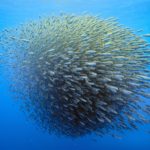
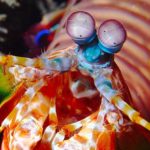
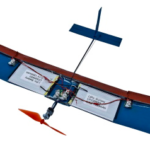



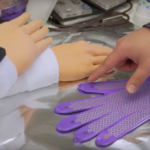

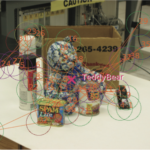
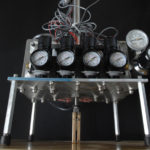

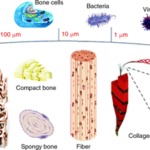
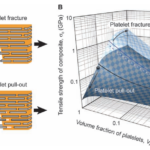

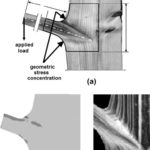




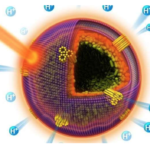
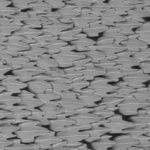
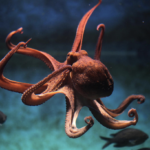

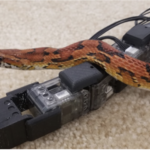
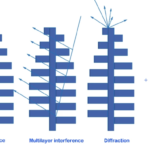
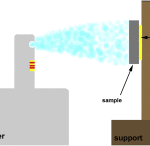
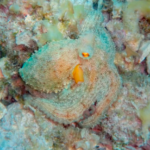
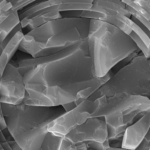
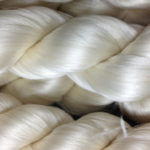



I imagine that the neurological circuits underlying these processes are governed by both 2d spacing maps with their brains as…
to reduce the impact of car accidents, it may be possible to study the force diverting physics of cockroaches to…
you see this type of head-bobbing stability in many avian creatures related to pigeons like chickens. the head ability to…
not like they taught horses how to run! this is an example of convergent evolution where both sea creatures and…
The brain functions in a similar way with neuronal connections. our brains are able to utilize the multiplicity of connections…